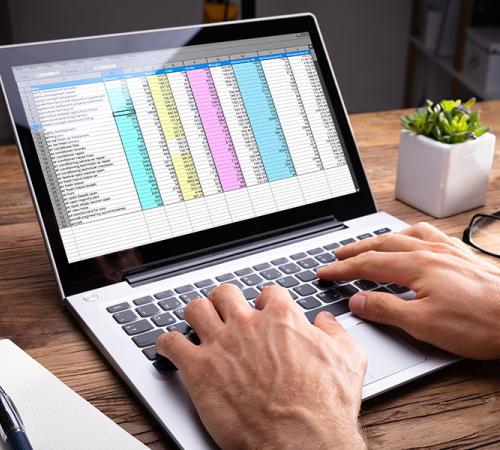

Employment Allowance (external link) is a government scheme that allows eligible employers to reduce their annual National Insurance (NI) liability by up to £10,500 per tax year. The allowance can be applied through your payroll software and can reduce your monthly employer NI contributions until either the full amount is used or the tax year ends.
It was introduced in 2014 to support small businesses in job creation and retention by reducing the cost of employment. This relief can help employers free up funds to reinvest in growth, hire additional staff, or improve cash flow.
Who is eligible for Employment Allowance?
To qualify in the 2025/2026 tax year, businesses must meet the following criteria:
- You employ at least one person besides yourself as a company director (unless you employ multiple directors).
- You run a business, charity or community amateur sports club that pays employer Class 1 NI contributions.
Starting in 2025, employers paying more than £100,000 in Class 1 NI liabilities can apply. Previously, only employers paying less were eligible.1 (external link)
Some businesses cannot claim Employment Allowance, including:
- Sole traders with no employees, as they don’t pay employer National Insurance.
- Companies with only one director, where that director is the only employee paid above the secondary threshold (external link) (£5,000 a year from 6 April 2025 to 5 April 2028).
- Public sector employers where more than 50% of work is public, such as NHS services or council-run operations.2 (external link)
- Off-payroll workers under IR35 rules cannot be included in the claim.3 (external link)
Businesses with multiple PAYE (Pay-As-You-Earn) schemes may be eligible to claim Employment Allowance against one scheme.4 (external link) If you’re part of a group of connected companies, only one company in the group can claim the allowance.5 (external link)
Note: Eligibility rules have changed regularly since the scheme’s introduction, so it’s important to check the latest GOV.UK (external link) guidance.
How much can a business claim?
Employment Allowance currently offers eligible businesses a reduction of up to £10,500 per tax year on their employer NI contributions. This amount applies to the 2025/26 tax year, having increased from £5,000 in the previous tax year.6 (external link)
The allowance works by reducing your employer Class 1 NI liability each time you run payroll until either:
- The full £10,500 allowance has been used up for the tax year, or
- The tax year ends (5 April).7 (external link)
If your business doesn’t use the full £10,500 within the tax year, you cannot carry forward any unused allowance to the next tax year.
Similarly, if your total employer NI liability is over £10,500, you’ll only receive relief on the first £10,500, with standard NI contributions payable on the remainder.8 (external link)
How to claim Employment Allowance
If eligible, you can claim Employment Allowance through your payroll system by submitting an Employer Payment Summary (EPS). (external link)
If using payroll software, select ‘Yes’ to Employment Allowance in your next EPS to HMRC. You only need to do this once per tax year.
If your payroll software does not have an Employer Payment Summary, you can use HMRC’s Basic PAYE Tools (external link). You can find out how to do this at GOV.UK (external link).
Common mistakes to avoid when claiming
Forgetting to renew your claim each tax year
While HMRC’s systems may automatically renew your claim, this isn’t guaranteed. HMRC advises businesses to claim Employment Allowance every tax year. (external link)
Missing backdated claims
If you forget to claim in April, you can still activate your Employment Allowance later and receive the full annual allowance.
Similarly, if your employers’ Class 1 NI liabilities were less than £100,000 last year, you may be able to claim Employment Allowance for the last four tax years (external link) if you did not previously do so.
Not keeping proper records
Failing to maintain documentation of eligibility assessments can cause issues during HMRC reviews. Records of Employment Allowance claims should be kept for at least 3 years (external link) in case of an HMRC inquiry.
Misinterpreting public sector rules
Many businesses with public sector work incorrectly assume they’re excluded from claiming. The rule only applies if 50% or more of your work is in the public sector. Businesses that self-exclude themselves based on small public sector contracts may miss out on potential savings.
Claiming when operating as a one-person company
Single-director companies with no other employees are typically ineligible, but many mistakenly assume they qualify because they’re small.
Not monitoring ongoing eligibility
Failing to recognise when your circumstances change mid-year (for example, if you secure a new public sector contract which takes you over the 50% threshold) can lead to compliance issues.
Not considering connected companies properly
If you operate multiple companies under common control, only one can claim Employment Allowance.
For small businesses with limited cash flow, the Employment Allowance can significantly reduce employment costs, enabling you to reinvest these savings into growth.
You can read our blog for more information on government support for small businesses. If you’re unsure about your obligations, you can seek professional advice from a tax agent. (external link)
Disclaimer:
At Hiscox, we want to help your small business thrive. Our blog has many articles you may find relevant and useful as your business grows. But these articles aren’t professional advice. So, to find out more on a subject we cover here, please seek professional assistance.
References
- https://www.gov.uk/claim-employment-allowance/eligibility
- https://www.gov.uk/government/publications/employment-allowance-more-detailed-guidance/eligibility-for-employment-allowance-further-employer-guidance
- https://www.gov.uk/claim-employment-allowance
- https://www.gov.uk/government/publications/employment-allowance-more-detailed-guidance/claiming-employment-allowance-further-employer-guidance
- https://www.gov.uk/claim-employment-allowance/eligibility
- https://www.fsb.org.uk/resources/article/what-is-the-employment-allowance-and-am-i-eligible-MCZ2C2VTGXWRBQZFYS6R5FO2JKWI
- https://www.gov.uk/claim-employment-allowance
- https://www.gov.uk/claim-employment-allowance





